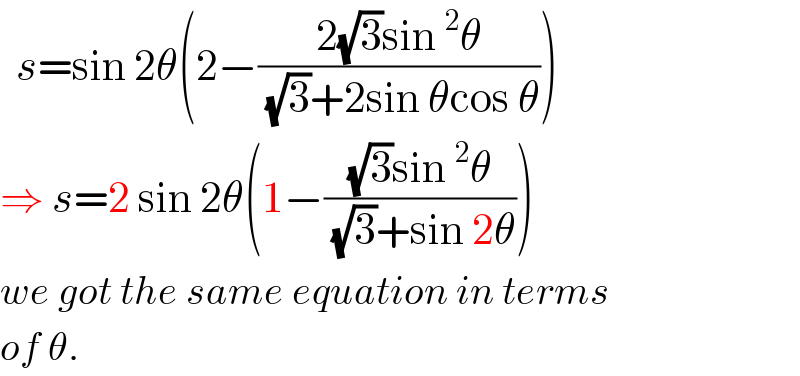
Question and Answers Forum
Question Number 125491 by ajfour last updated on 11/Dec/20
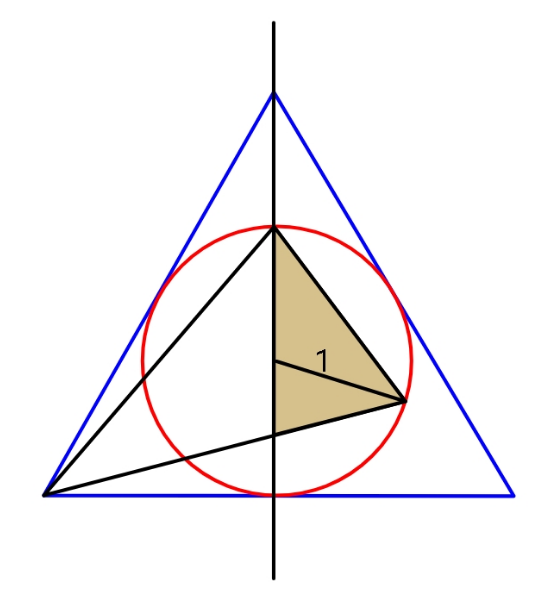
Commented by ajfour last updated on 11/Dec/20

Answered by mr W last updated on 11/Dec/20
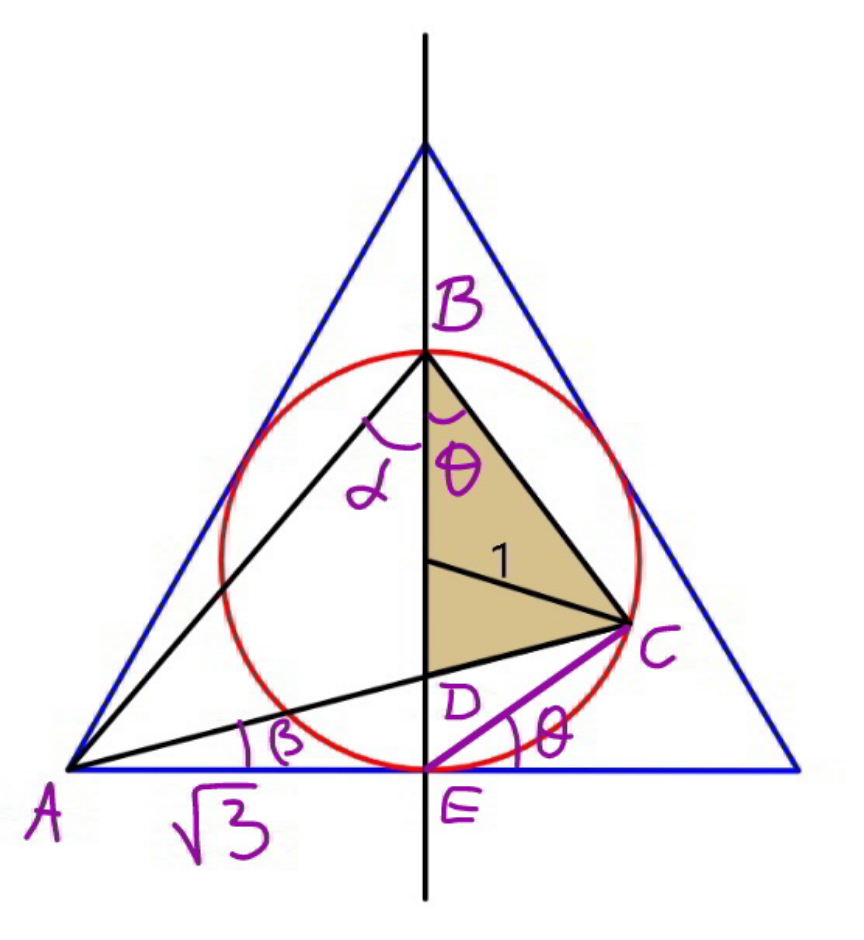
Commented by mr W last updated on 11/Dec/20
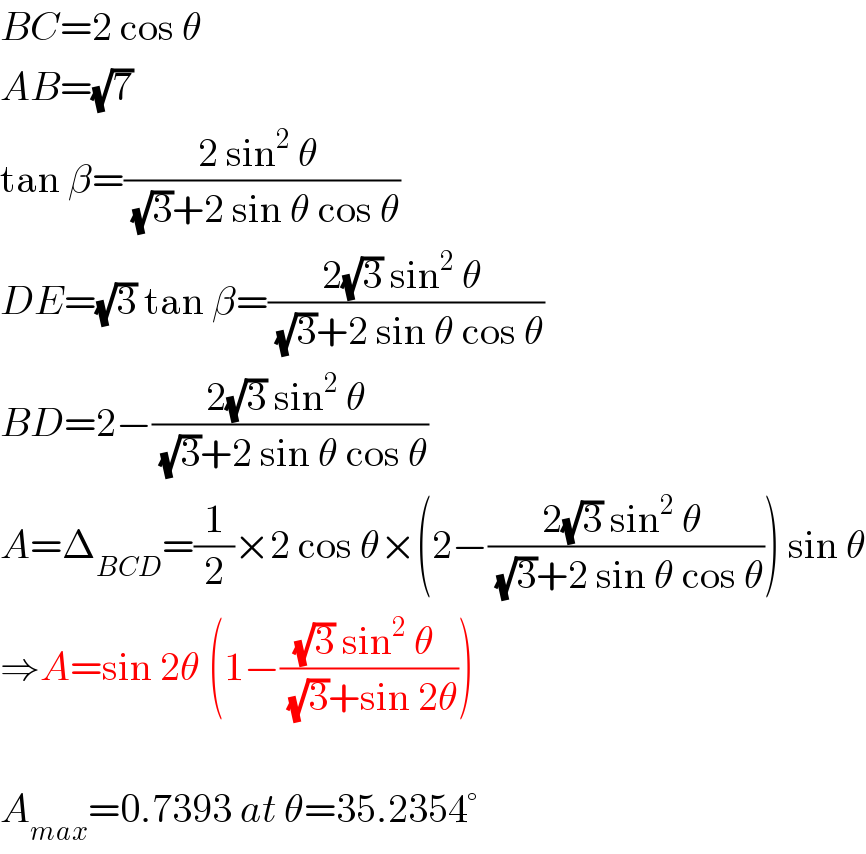
Commented by ajfour last updated on 11/Dec/20
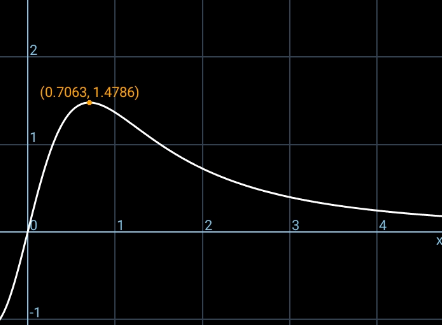
Commented by mr W last updated on 11/Dec/20
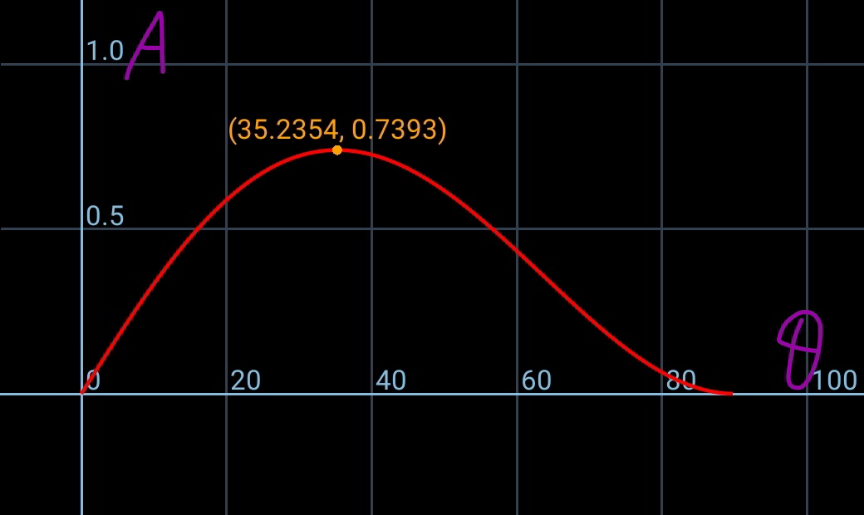
Commented by ajfour last updated on 11/Dec/20
![tan α=((√3)/2) Let bottommost point of circle F. ∠ADF=φ , center of circle O. let OD=y ((sin 2θ)/(CD))=((sin φ)/1)=((sin (φ+2θ))/y) ⇒ y=cos 2θ+((sin 2θ)/(tan φ)) tan φ=((√3)/(1−OD))=((√3)/(1−y)) ⇒ y=cos 2θ+(((1−y)sin 2θ)/( (√3))) ⇒ y=(((√3)cos 2θ+sin 2θ)/( (√3)+sin 2θ)) Area s=2△=(1+y)sin 2θ s=(1+y)sin 2θ =(1+(((√3)cos 2θ+sin 2θ)/( (√3)+sin 2θ)))sin 2θ let tan θ=m s=sin 2θ(2−((2(√3)sin^2 θ)/( (√3)+2sin θcos θ))) =((4m)/((1+m^2 )))[1−(((√3)m^2 )/( (√3)(1+m^2 )+2m))] ⇒ △_(max) =(s_(max) /2)≈ 0.7393 θ≈ tan^(−1) (0.7063)≈35.234°](Q125534.png)
Commented by ajfour last updated on 11/Dec/20

Commented by ajfour last updated on 11/Dec/20

Commented by mr W last updated on 12/Dec/20
